In video games, a power-up is an object that adds temporary benefits or extra abilities to the player character as a game mechanic. This is in contrast to an item, which may or may not have a permanent benefit that can be used at any time chosen by the player. Although often collected directly through touch, power-ups can sometimes only be gained by collecting several related items, such as the floating letters of the word 'EXTEND' in Bubble Bobble. Well known examples of power-ups that have entered popular culture include the power pellets from Pac-Man and the Super Mushroom from Super Mario Bros., which ranked first in UGO Networks' Top 11 Video Game Powerups.

Berzerk is a multidirectional shooter designed by Alan McNeil and released for arcades in 1980 by Stern Electronics of Chicago. Following Taito's Stratovox, it is one of the first arcade video games with speech synthesis. Berzerk places the player in a series of top-down, maze-like rooms containing armed robots. Home ports were published for the Atari 2600, Atari 5200, and Vectrex.
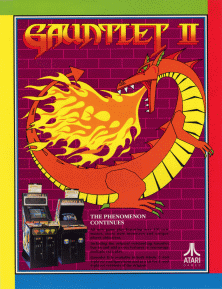
Gauntlet II is a 1986 arcade game produced by Atari Games that serves as the immediate sequel to the original Gauntlet, which was released the previous year. Like its predecessor, Gauntlet II is a fantasy-themed top down dungeon crawler game and was released as a dedicated cabinet, as well as a conversion kit, both available in 2-player and 4-player versions.

1943: The Battle of Midway is a 1987 vertically scrolling shooter arcade video game developed and published by Capcom.

Ninja Gaiden II: The Dark Sword of Chaos, known in Europe as Shadow Warriors II: The Dark Sword of Chaos, is a side-scrolling platform game developed and published by Tecmo for the Nintendo Entertainment System (NES). This is the second installment in the Ninja Gaiden trilogy for the NES and was released in North America and Japan in 1990, and in Europe in 1992. An arcade video game version was also introduced by Nintendo for their PlayChoice-10 system in 1990.

Ninja Gaiden III: The Ancient Ship of Doom is a side-scrolling platform video game developed and published by Tecmo. It was released in Japan on June 21, 1991 for the Famicom and in North America on August 1991 for the Nintendo Entertainment System (NES). The NES version was not released in Europe. It was later ported to the Atari Lynx by Atari Corporation and released in 1993 in North America and Europe, the European version retaining the North American Ninja Gaiden III title. It was also re-released as part of its Ninja Gaiden Trilogy Super NES compilation in 1995 in Japan and North America. Long after, it was released for the Virtual Console service in North America on February 18, 2008 for the Wii and in North America and Europe on November 28, 2013 and January 23, 2014 respectively for the Nintendo 3DS. It was designed by Masato Kato, who took over for Hideo Yoshizawa—designer of the first two games in the NES series.
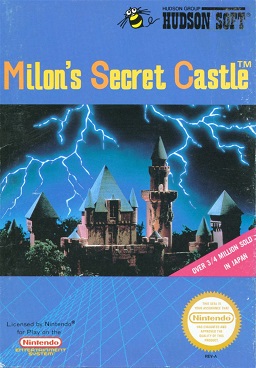
Milon's Secret Castle, known in Japan as Meikyū Kumikyoku: Milon no Daibōken, is a 1986 action-adventure game released by Hudson Soft for the NES. A Game Boy version was released in 1993. A sequel, DoReMi Fantasy, was released in 1996 for the Super Famicom.

Bomberman is a maze video game developed and published by Hudson Soft. The original home computer game Bomber Man was released in July 1983 for the NEC PC-8801, NEC PC-6001 mkII, Fujitsu FM-7, Sharp MZ-700, Sharp MZ-2000, Sharp X1 and MSX in Japan, and a graphically modified version for the MSX and ZX Spectrum in Europe as Eric and the Floaters. A sequel, 3-D Bomberman, was produced. In 1985, Bomberman was released for the Nintendo Entertainment System. It spawned the Bomberman series with many installments building on its basic gameplay.
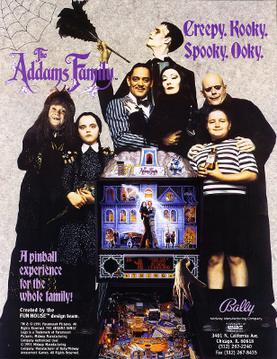
The Addams Family is a pinball machine released in March 1992. It was designed by Pat Lawlor and Larry DeMar and released by Midway. It was based on the 1991 film of the same name, and features custom speech by the stars of the film, Anjelica Huston and Raul Julia. It is the best-selling solid state pinball machine of all time with 20,270 units sold.

Warp & Warp is a multidirectional shooter arcade video game developed and published by Namco in 1981. It was released by Rock-Ola in North America as Warp Warp. The game was ported to the Sord M5 and MSX. A sequel, Warpman, was released in 1985 for the Family Computer with additional enemy types, power-ups, and improved graphics and sound.

Widget is an action-platform video game series created for the Nintendo Entertainment System in the 1990s by Atlus. It was based on the cartoon series Widget the World Watcher, which stars a purple alien named Widget. The original game came out in 1992, followed by the sequel Super Widget on the Super NES in 1993.
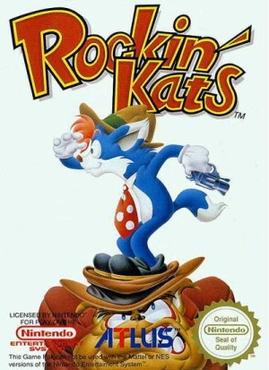
Rockin' Kats is a platform video game produced by Atlus Software Inc. in 1991 for the Nintendo Entertainment System. The side-scrolling game involves the adventures of a cartoon cat in his quest to defeat a criminal gang of dogs that has taken over the city.
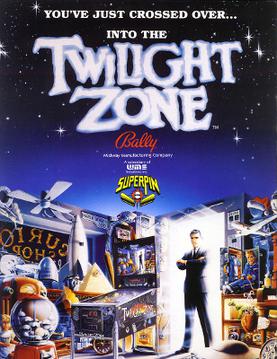
Twilight Zone is a widebody pinball machine, designed by Pat Lawlor and based on the TV series of the same name. It was first released in 1993 by Midway. This game is part of WMS' SuperPin line of widebody games alongside Star Trek: The Next Generation and Indiana Jones: The Pinball Adventure.

Super Monkey Ball Deluxe is a platform video game developed and published by Sega. It was released for the PlayStation 2 and Xbox in 2005. The game compiles all stages from Super Monkey Ball and Super Monkey Ball 2, as well as adding original levels.

RoboWarrior, known in Japan as Bomber King, is an action puzzle video game developed by Hudson Soft, and co-developed by Aicom, making it their first NES game they worked on, and published by Jaleco for the Nintendo Entertainment System and the MSX.

Section Z is a horizontally scrolling shooter by Capcom, released as an arcade video game in 1985. A home version was published for the Nintendo Entertainment System in 1987.

Mendel Palace is a 1989 puzzle video game developed by Game Freak. It was published in Japan by Namco and in North America by Hudson Soft. Mendel Palace is the debut game of Satoshi Tajiri and his company Game Freak. This success inspired him to create the Pokémon series.

Zuma's Revenge! is a 2009 tile-matching puzzle video game developed and published by PopCap Games. It was released for Microsoft Windows and Mac OS X, as a sequel to the earlier 2003 video game, Zuma, and was later ported to Windows Phone.

Fun 'n Games is a compilation video game developed by Leland Interactive Media and released for the Super NES and Mega Drive/Genesis platforms in 1993 and 1994. In 1995, an updated, redeveloped version of the game was released on the 3DO Interactive Multiplayer and MS-DOS by Williams Entertainment Inc. The North American Super NES version of the game is considered to be one of the more rare games released for the console.
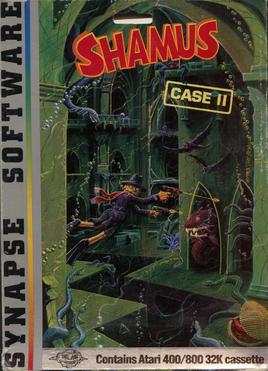
Shamus: Case II is a 1983 video game for the Atari 8-bit family written by Cathryn Mataga and published by Synapse Software. Mataga also wrote the original Shamus and the scrolling shooter Zeppelin. A port to the Commodore 64 by Joe Vierra was released in 1984. Although ostensibly a sequel to Shamus, the gameplay is very different, combining aspects of platform games, maze games, and even Breakout. Case II was as well received as the original.




















